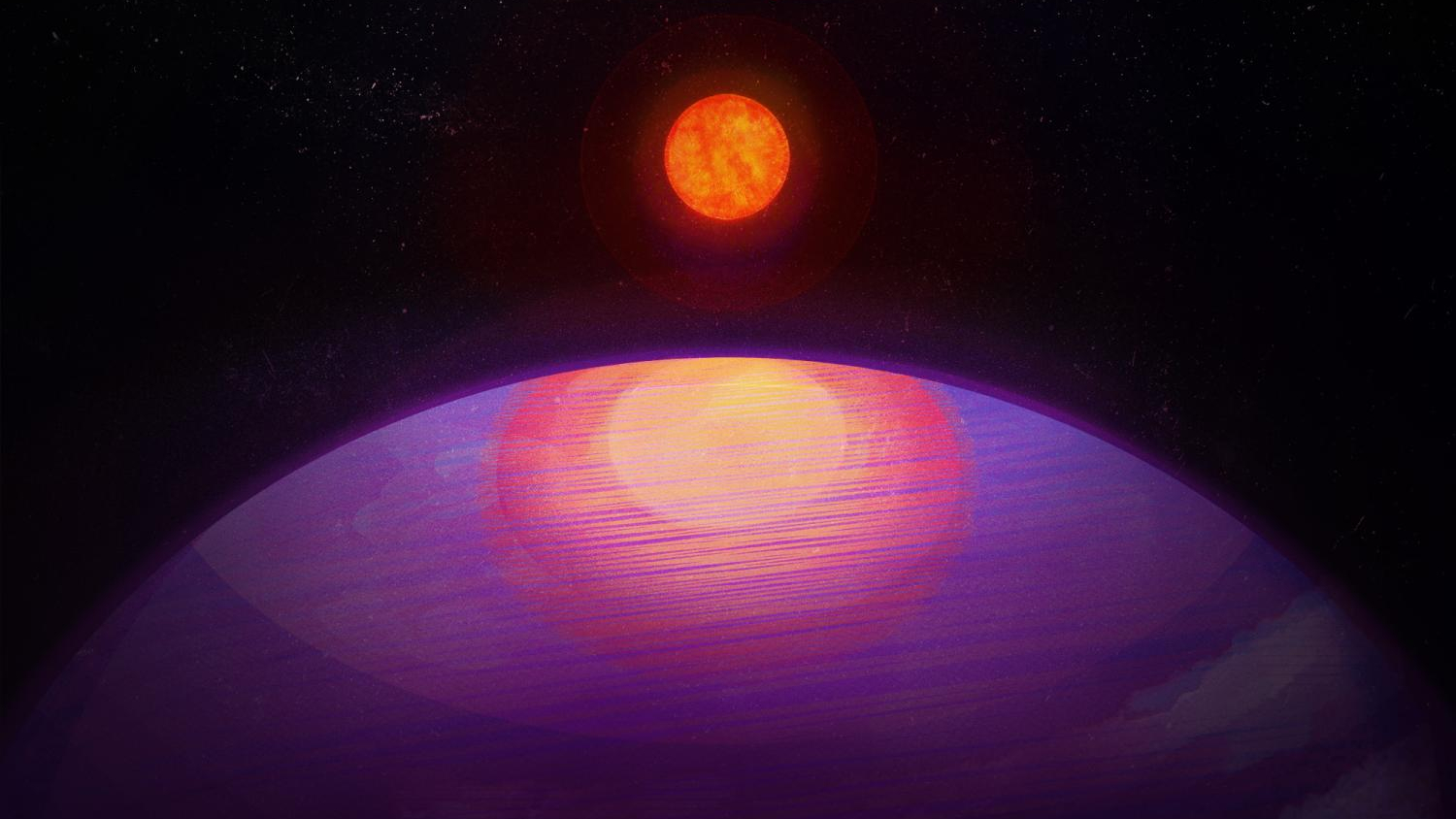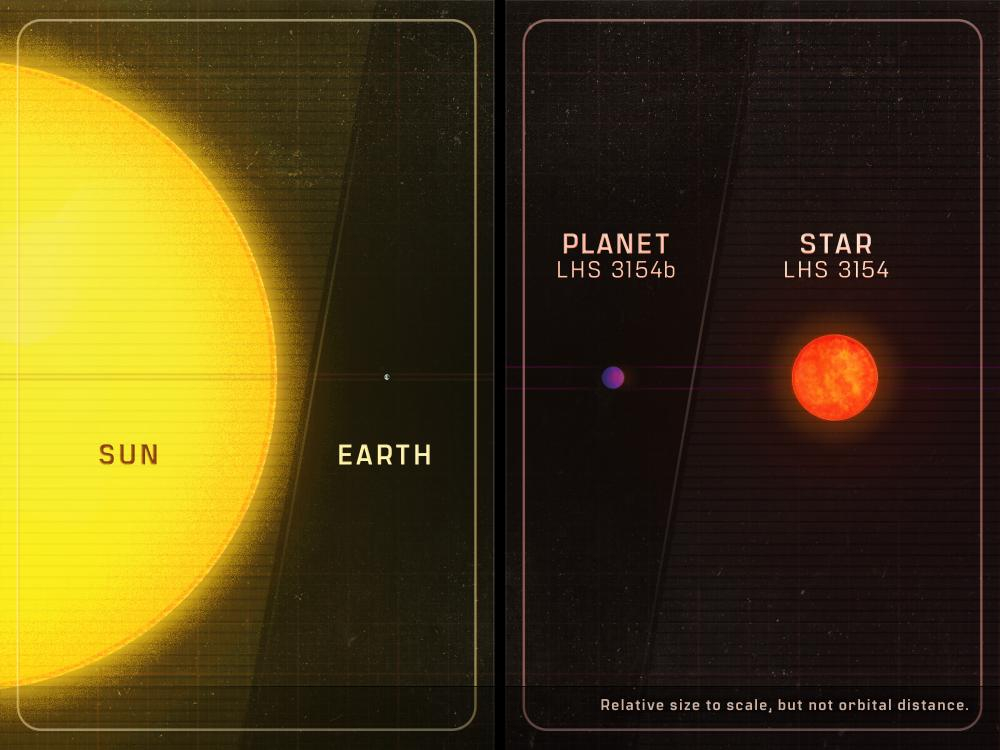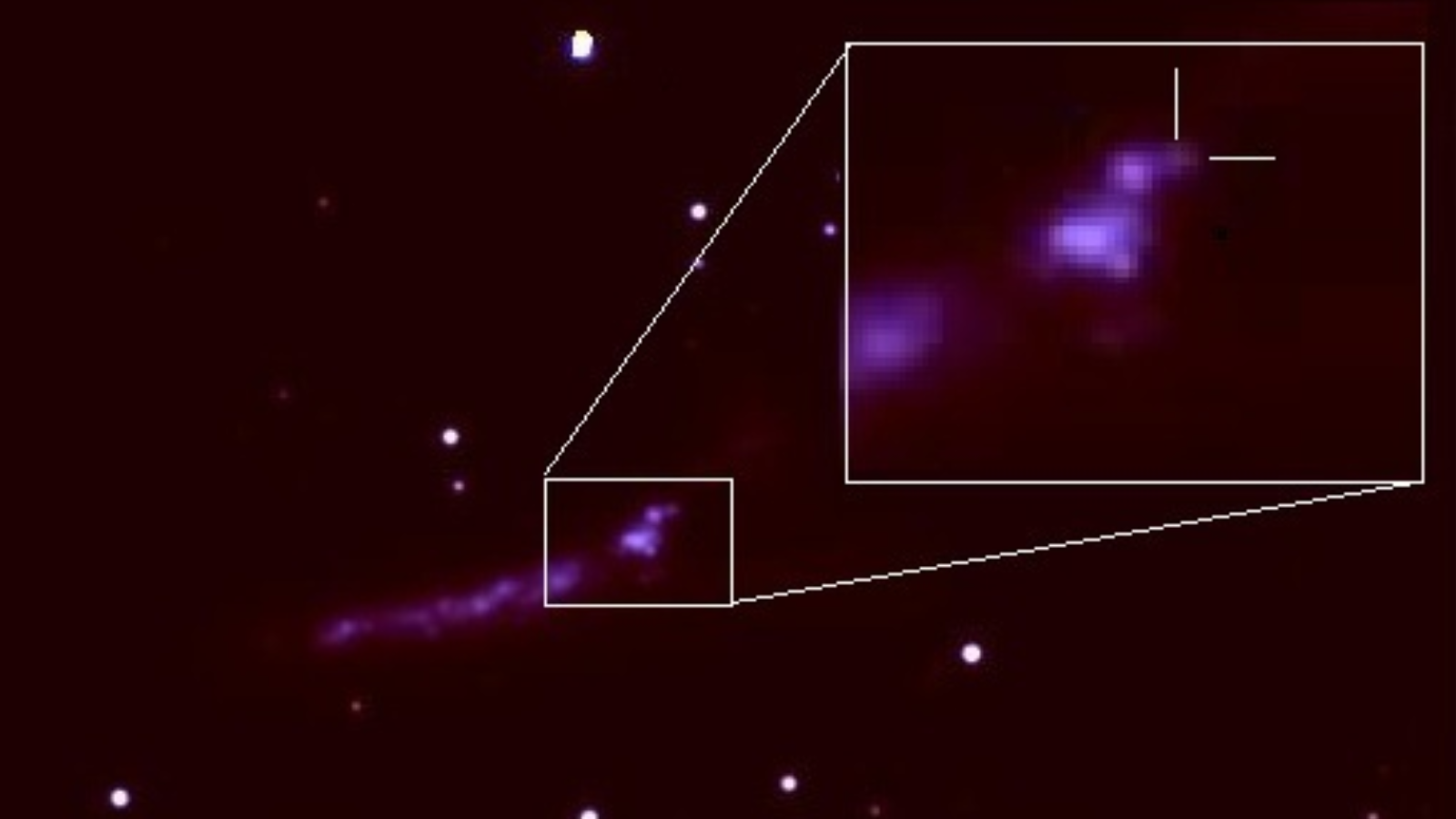This 'forbidden' exoplanet is way too massive for its star
"This discovery really drives home the point of just how little we know about the universe. We wouldn’t expect a planet this heavy around such a low-mass star to exist."

Astronomers have discovered a massive extrasolar planet, or "exoplanet," orbiting an ultracool dwarf star that is way too small to host such a world, challenging scientists' models of how planets and planetary systems are born.
The planet in question, designated LHS 3154 b, is 13 times as massive as Earth, meaning that it has a mass similar to the solar system ice giant Neptune, yet it closely orbits a tiny dwarf star, which is nine times less massive than the sun.
This means the ratio between the Neptune-like world and its parent star — LHS 3154, which is located around 51 light-years away — is 100 times greater than the mass ratio between Earth and the sun, something researchers didn’t think was possible. This is the first time a planet with such a great mass has been found around one of the universe’s more diminutive stars.
"This discovery really drives home the point of just how little we know about the universe," research co-author and Penn State University Verne M. Willaman Professor of Astronomy and Astrophysics, Suvrath Mahadevan, said in a statement. "We wouldn’t expect a planet this heavy around such a low-mass star to exist."
Related: This rare exoplanet system has 6 ‘sub-Neptunes’ with mathematically perfect orbits
Challenging how stars and planets are born
Stars are formed when vast clouds of gas and dust accumulate overly dense patches that grow until they ultimately collapse under their own gravity. This leaves an infant star surrounded by a disk of leftover material called a "protoplanetary disk."
As that name implies, it is from this leftover disk of material that scientists believe planets eventually emerge. The amount of material left over from the formation of the star sets a limit on how big these potential planets can be.
Breaking space news, the latest updates on rocket launches, skywatching events and more!
The team determined that LHS 3154 b has such a heavy planetary core that the planet-forming disk from which it came from would've had to hold a great deal of solid material. In short, it'd have to have more material than current models would predict possible, research coauthor and astronomy graduate student at Penn State Megan Delamer explained.
Thus, the discovery of this particular exoplanet also raises questions about the formation of stars. This is because the ratios of the dust-to-mass and dust-to-gas content of LHS 3154's original protoplanetary disk would have had to be ten times higher than predictions in order to birth a Neptune-like world as massive as LHS 3154 b.
"The planet-forming disk around the low-mass star LHS 3154 is not expected to have enough solid mass to make this planet," Mahadevan explained. "But it's out there, so now we need to reexamine our understanding of how planets and stars form."
The Habitable Zone Planet Finder is exceeding expectations
Mahadevan and colleagues detected the exoplanet LHS 3154 b by using the Habitable Zone Planet Finder (HPF), an astronomical spectrograph at the Hobby-Eberly Telescope at the McDonald Observatory in Texa. HPF is designed to detect exoplanets as they orbit some of the coolest stars in the Milky Way.
The particular focus of the instrument, which Mahadevan actually helped build alongside a team, is on planets neither too close nor too far from their stars to host liquid water, a key requirement of life. These would be planets that sit in the so-called habitable zone around their stars.
Such planets are not easy to spot, partly because the habitable zone of cool stars is much closer to those stars than the zone is in our solar system, for instance. This means these worlds are often obscured by light from their relatively small parent stars.
Additionally, these planets are expected to be small themselves, making them tougher to detect.
"Think about it like the star is a campfire. The more the fire cools down, the closer you'll need to get to that fire to stay warm," Mahadevan said. "The same is true for planets. If the star is colder, then a planet will need to be closer to that star if it is going to be warm enough to contain liquid water.
"If a planet has a close enough orbit to its ultracool star, we can detect it by seeing a very subtle change in the color of the star’s spectra or light as it is tugged on by an orbiting planet."
The detection of LHS 3154 b is important for the HPF as it shows the instrument's potential to deliver important exoplanet results, with team member and NASA Sagan Fellow in Astrophysics at Princeton University saying that this result has exceeded all expectations for the instrument.
"What we have discovered provides an extreme test case for all existing planet formation theories," Mahadevan concluded. "This is exactly what we built HPF to do, to discover how the most common stars in our galaxy form planets — and to find those planets."
The team’s research was published on Nov. 30 in the journal Science.

Robert Lea is a science journalist in the U.K. whose articles have been published in Physics World, New Scientist, Astronomy Magazine, All About Space, Newsweek and ZME Science. He also writes about science communication for Elsevier and the European Journal of Physics. Rob holds a bachelor of science degree in physics and astronomy from the U.K.’s Open University. Follow him on Twitter @sciencef1rst.

